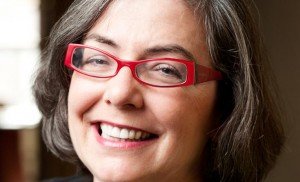This post was originally published on Nov. 17th, 2014 at www.GreenBiz.com and was written by Christine Kennedy and Katie Menke both BardMBA ’15 candidates.
Libby Bernick’s job is to put numbers on nature.
She is senior vice president for North America at Trucost, a research firm whose unique expertise places monetary value on environmental performance. The aim is to help direct the flow of capital toward more sustainable business models and solutions in the marketplace. Its latest work is an app, developed with Ecolab, which puts a real price on water risk based on market price and local scarcity.
This Q&A is an edited excerpt from an Oct. 3 Sustainable Business Fridays conversation held by the Bard MBA in Sustainability program, based in New York City. This twice-monthly dial-in conversation features sustainability leaders from across the globe. The last interview was with author Christine Bader.
Bard MBA: How did Trucost develop its expertise in valuation of natural capital?
Libby Bernick: The company was originally founded by several folks from the investment community who thought it right that investors are asking about environmental risks in their portfolios, but weren’t sure that the right questions were being asked. What came out of that was the Trucost Environmental Register: a database that covers about 94 percent of listed equity globally, about 4,800 of the world’s largest companies, and it includes quantified information on more than 100 environmental metrics, as well as the business value at risk.
What is central to that database was the Trucost economic input-output lifecycle assessment model [I/O LCA]. It’s something that Trucost customized specifically to look at a wide range of commodities and energy flows throughout the global economy. The economic I/O LCA model and the Trucost Environmental Register database are unique to Trucost. Along the way, we amassed a large library of publicly available databases and tools. To some extent we’re agnostic as to the information that we use — we want use best in class information, whether it’s what Trucost has developed or whether it’s publicly available information.
Bard MBA: What questions are organizations answering using natural capital and ecosystem valuation?
Bernick: The first question that businesses or investors ask is, “How much natural capital is my business using?” Or, “How does my business depend on natural capital?”
It’s not always apparent because there are many businesses whose risks are embedded deep within their supply chain. The starting point is to understand in what ways, positive and negative, does my business depend on natural capital to grow revenue.
The second question is, “Now that I know how much my business depends on natural capital, how much of that natural capital is really available to me? Am I using more than what’s likely to be there in the course of my business?”
I would say that the third set of questions is, “How do I build a more resilient supply chain or portfolio? What are the environmental risks within my investment portfolio and in my enterprise?”
Bard MBA: What are some of the complications in assessing monetary value?
Bernick: One of the thorniest issues is having site-specific data. We did some work earlier this year measuring the benefits of different kinds of agricultural practices related to soy and palm oil. We created a framework for valuing the benefits of more sustainable agriculture but then we had to gather the data. One of the issues is balancing what a business needs to know with the amount of data that needs to be captured.
Questions we ask early on in the process are: What is the business decision that we need to inform? How detailed does it need to be? Are there proxies that we can use in lieu of site-specific data? It is vital to understand how a business will use the information and make sure the data and valuation is sufficiently robust to support that kind of decision.
Bard MBA: Are there any specific resources where Trucost is on the frontier of natural capital valuation?
Bernick: An area where Trucost has pioneered is our ability to quantify and measure supply chain performance. We developed an I/O model from raw materials sourcing all the way through business operations. We’re able to do that very quickly and efficiently. Our work both in measuring the performance of an investment portfolio and measuring the company supply chain draws on that tool and technique.
Another area where we’ve done a lot of research that has been helpful to businesses and investors is how water scarcity is linked to its value. We’ve looked across every country and their purchasing power and how that relates into the water scarcity models.
Bard MBA: You have been in the sustainability field for a long time. What progress excites you?
Bernick: I have been doing this for about 30 years now and I continue to be excited about what we can do to move business forward in a way that helps them grow revenue with less dependence or more thoughtful dependence on natural capital.
I continue to see examples where companies are making greener products that will change the game. More traditional businesses are starting to report on their greener products. It’s exciting to see multinational businesses that are recognizing an opportunity and market demand to develop greener products and services. I’m trained as a scientist and an engineer, so I’m also excited by the conversation that’s evolving around science-based targets.
The full recording of this conversation is available here.